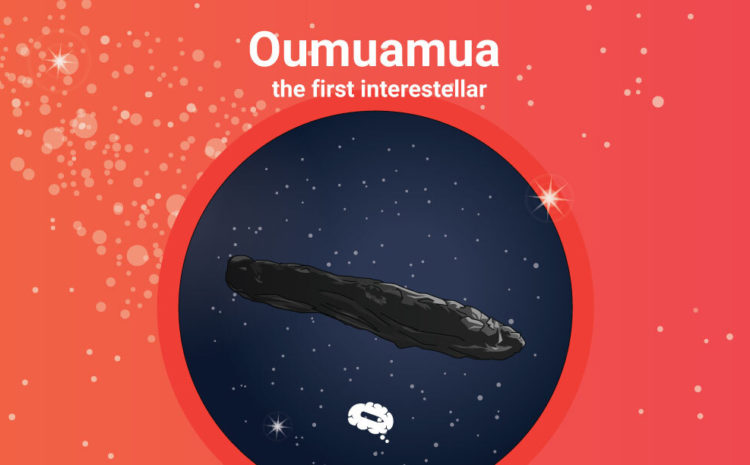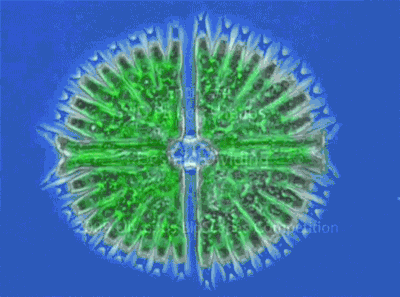A little more than three years ago a strange object in the sky 2017 appeared. Named ‘Oumuamua, the object has divided the Astronomy community, raising discussions about its nature.
One group of researchers claim that the interstellar body was originated by breaking free from another planet’s gravitational field, while others say that maybe it could be an alien craft, because of its many different characteristics from everything already seen.
Which theory is correct, remains unclear.
In one episode of the podcast Joe Rogan Experience, Avi Loeb, theoretical physicist and Harvard professor spoke with the American comedian and podcast host Joe Rogan in defense of the alien craft theory.
In the Joe Rogan’s podcast, Loeb explained and discussed what made him reach that conclusion.
“Just like Sherlock Holmes, I follow the evidence, trying to find the solution,” says Loeb after being asked about the 2020 Oumuamua polemic has conquered, by the podcast host.
The interstellar body was the first one from the outside solar system to visit our surroundings.
At the first moment, astronomers thought it could be another comet or asteroid. However, ‘Oumuamua characteristics did not match comets and asteroids parameters.
Loeb explains that the ‘Oumuamua was not a conventional object, it had some anomalies, some characteristics that did not resemble any other conventional space objects already seen.
Since regular comets come from the solar system periphery, other stars have (or at least should have) their comets as well. Moreover, these pieces of comets are loosely bound in the periphery and can easily escape from their host star and travel in different directions.
In matters of ‘Oumuamua to be a comet, Loeb explains to Joe Rogan, “comets are rocks covered with ice when it gets close to the sun its surface gets warmed up and the ice turns into vapor, and you see this beautiful cometary tail behind it… While asteroids are just rocks without much ice on them.”
And there was a problem to say that ‘Oumuamua was a comet, there was not any cometary tail.
Beyond the lack of a cometary tail, there was another unusual characteristic that conventional astronomy could not explain:
The interstellar body ‘Oumuamua had an extra push in a path away from the Sun.
Loeb explains that this extra push is normally present and caused by the cometary tail.
The ice evaporation process (just like a rocket burning its fuel) gives an extra push to the rock object in the opposite direction, but ‘Oumuamua did not have any cometary tail, so where did the extra push come from?
Loeb shared with Joe Rogan that, at this point, he started to think that maybe ‘Oumuamua was not either a comet or an asteroid, it could be something else, like an alien craft.
Furthermore, another strange characteristic about the interstellar object was its brightness.
The ‘Oumuamua brightness changed the reflection of sunlight by a factor of ten which could mean a specific geometric format.
“Think about a very thin piece of paper tumbling in the wind and changing the area that we can see. Changing the projected area of that piece of paper by a factor of ten, as we look at it. That’s exactly what we inferred from this object spinning around every eight hours” said Loeb about the strange interstellar object brightness.
This factor measured led to a conclusion that ‘Oumuamua probably has a specific geometry shape and it’s most likely flat, just like a sheet of paper.

Recapping all data above, the interstellar object did not demonstrate traces of dust or gas, or any other material that would explain the extra push. Additionally, it had an unusual brightness, attributed to its shape.
Loeb and his team wondered what could explain all these peculiar characteristics.
In turn, they came up with a theory that maybe the interstellar object was being pushed by sunlight reflected on its surface. Just like “the sale is pushed by the wind, you can also push a thin object by light, that is called The Light Sail, and we are actually using this technology now, developing it for space exploration”, says Loeb to Joe Rogan.
Additionally to all that, ’Oumuamua’s speed was very unusual.
The space object was so fast that astronomers could not think of a way to chase the object in order to collect more information.
When compared to rockets launched from Earth ‘Oumuamua was remarkably faster, leading astronomers to discard the possibility that it could be an Earth-originated technology.
Gathering all the information collected from the space object, Loeb and his team concluded that maybe this object could belong to another civilization a.k.a aliens.
This conclusion stirred many disagreements among astronomers, leading to the discussion we have seen in 2020 about this strange object that appeared in the sky in 2017.
If ‘Oumuamua belongs to aliens or not, maybe it will take decades for us to find out. Or maybe we may never know, only time will tell.
Nevertheless, base on Loeb’s studies ‘Oumuamua was not sent to our solar system by aliens to spy on Earth.
Maybe it was just an alien craft technology that unintentionally lost itself, like space junk.
In the end, what we need to take out from this is that we all should be open-minded and forward-thinking to all possibilities, including the one of life beyond our solar system.
The full podcast episode with Avi Loeb on The Joe Rogan Experience is available now on Spotify. If you also would like to read about the subject here is a list of scientific articles published by Loeb and his team.
___
Dear scientists from the astronomy field, in Mind the Graph we have planets, galaxies, comets, satellites, and even astronauts for you to use in your graphical abstracts, presentations, scientific infographics to make your research more beautiful and attractive to reach more people.
The idea of the platform is that you can have total autonomy to be able to better communicate your research, join us to learn more about how to use the platform and communicate your scientific research.
Start using the platform right now by clicking here!

Subscribe to our newsletter
Exclusive high quality content about effective visual
communication in science.





